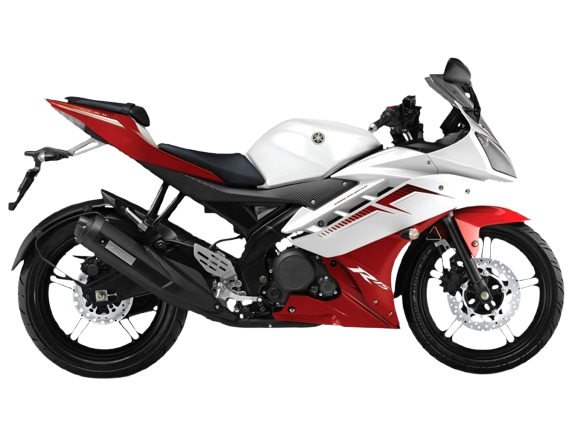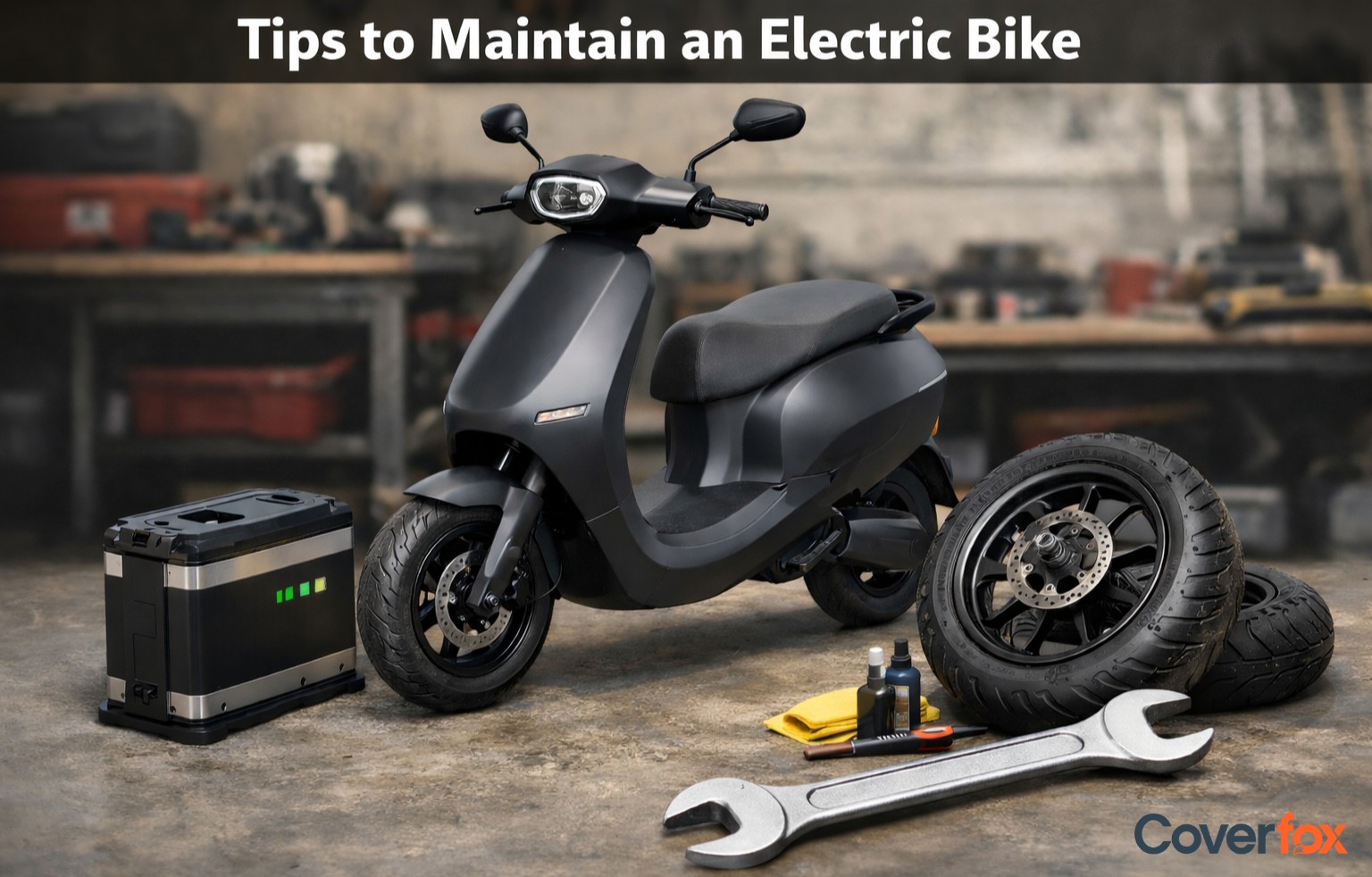Ever hit a pothole and felt your bike jolt harder than usual? That’s your suspension telling you something’s wrong. The suspension system does far more than smooth out bumps—it keeps your ride stable, safe, and under control. In this article, we’ll uncover the warning signs of suspension problems, what causes them, and how to fix and maintain your bike for a smoother, safer ride.

Ever hit a pothole and felt your bike jolt harder than usual? That’s your suspension telling you something’s wrong. The suspension system does far more than smooth out bumps—it keeps your ride stable, safe, and under control. In this article, we’ll uncover the warning signs of suspension problems, what causes them, and how to fix and maintain your bike for a smoother, safer ride.
What Does the Bike Suspension System Do?
A bike’s suspension system is what keeps your ride smooth, stable, and in control. It absorbs shocks from bumps and potholes through front forks and rear shocks, helping tyres stay firmly on the road. Springs handle impact absorption, dampers (shock absorbers) control rebound and movement, and seals keep the system leak-free. Together, they maintain ride height, comfort, and balance—ensuring your bike performs safely and predictably.
Common Signs of Suspension Problems in Bike
When your bike’s suspension starts acting up, it often gives you subtle (and sometimes loud) warnings you shouldn’t ignore. Here are the key signs to look out for:
1. Oil leakage from forks or shocks
Visible oil near the suspension indicates worn seals or internal damage.
2. Excessive bouncing
If the bike continues to bounce after hitting a bump, the dampers may be failing.
3. Bottoming out easily
Hitting the suspension limits on small bumps suggests weakened springs or low oil levels.
4. Unusual noises
Clunks, rattles, or squeaks point to loose or damaged suspension components.
5. Poor handling or instability
Difficulty maintaining control during cornering or braking signals suspension imbalance.
6. Uneven tyre wear
Irregular tyre tread wear can mean improper suspension alignment or damping.
7. Harsher ride quality
If bumps feel sharper than usual, the suspension isn’t absorbing shocks effectively.
Common Causes of Suspension Issues in Bikes
Most suspension problems develop gradually due to wear, poor maintenance, or harsh riding conditions. Here are the most common causes:
1. Worn-out springs
Over time, springs lose their stiffness, reducing their ability to absorb shocks effectively.
2. Damaged or leaking seals
Leaks from fork or shock seals cause loss of damping oil, leading to poor performance.
3. Incorrect preload or sag settings
Misadjusted suspension setup can make the ride either too soft or too harsh.
4. Old or degraded suspension oil
Suspension fluid breaks down with time, reducing damping efficiency and causing rough rides.
5. Excessive loading
Carrying more weight than recommended strains the suspension components and shortens their lifespan.
6. Frequent rough-terrain riding
Continuous exposure to potholes, off-road trails, or uneven surfaces accelerates wear and tear.
7. Neglected maintenance
Failing to clean or service the suspension regularly allows dirt and moisture to damage seals and internal parts.
How to Diagnose and Fix Bike Suspension Problems?
Diagnosing and fixing bike suspension problems involves a mix of observation, testing, and timely maintenance. Here’s how you can identify and resolve common issues:
Simple Bike Suspension Diagnosis Steps
Visual inspection
Check fork legs and rear shocks for oil leaks or dust buildup.
Bounce test
Push down on the front or rear end—if it bounces more than once, damping may be weak.
Listen for noises
Rattles or clunks often indicate loose bolts or worn bushings.
Tyre wear check
Uneven or cupped tyre wear suggests poor suspension balance.
Ride test
If your bike feels harsh over bumps, unstable while cornering, or dips excessively while braking, it’s time for a closer look.
Common Fixes for Suspension Problems in a Bike
- Replace worn fork or shock seals to stop leaks.
- Change suspension oil or fluid regularly to restore proper damping.
- Adjust preload, rebound, or compression settings for correct sag and comfort.
- Check wheel alignment and fasteners for tightness.
- Replace springs or dampers if worn out.
- For major tuning or rebuilds, seek professional suspension service for accurate setup and safety.
Maintenance Checklist & Best Practices for Bike Suspension
Here’s a quick bike suspension maintenance checklist to help you keep your ride smooth. Keeping your bike’s suspension in top shape requires consistent care and attention. Follow this checklist and best practices to ensure long-term performance and safety:
✅ Clean fork tubes and rear shock areas regularly to prevent dust and dirt buildup.
✅ Inspect for oil leaks, cracks, or worn seals frequently.
✅ Check tyre pressure and wheel alignment to ensure balanced suspension load.
✅ Replace fork oil and seals as per manufacturer’s recommended intervals.
✅ Avoid overloading the bike beyond its rated capacity.
✅ Adjust preload settings when carrying a pillion or luggage.
✅ Tighten all suspension bolts and fasteners periodically.
✅ Look out for unusual noises or excessive bouncing during rides.
✅ Test suspension travel and damping before long trips.
✅ Get a professional suspension service or tuning at least once a year.
When to Seek Professional Help?
While basic suspension checks can be done at home, some issues need expert attention to avoid costly damage or safety risks. Here’s when you should seek professional help:
- Persistent oil leaks despite seal replacement or cleaning.
- Unusual noises or clunks that continue after tightening bolts.
- Excessive bouncing or stiffness even after adjusting preload or damping.
- Visible damage to fork tubes, shocks, or mounting points.
- Uneven handling or poor stability that doesn’t improve with tyre or suspension adjustments.
- Major overhauls or rebuilds—like spring replacement or fluid tuning—should always be handled by a qualified mechanic.
Summary
A bike’s suspension system is vital for comfort, control, and safety on every ride. Early warning signs like oil leaks, noises, bouncing, or uneven tyre wear shouldn’t be ignored. Regular checks and timely maintenance can prevent costly damage, while serious issues need professional attention.
Keeping your suspension healthy not only ensures safer rides but also helps maintain your bike’s value and supports smoother claim approvals under your two wheeler insurance. A well-maintained suspension enhances overall ride quality, giving you confidence and stability on every journey.
Also Read:
Frequently Asked Questions
How do I know if my bike suspension is going bad?
If you notice excessive bouncing, oil leaks, clunking noises, or poor handling, your suspension likely needs attention.
How to check if suspension is ok?
Perform a bounce test, inspect for oil leaks, and observe the bike’s stability and comfort while riding.
What is the life expectancy of a bike suspension?
Typically 30,000–50,000 km depending on riding conditions, load, and maintenance frequency.
Can I fix suspension issues myself or do I always need to go to a mechanic?
Minor maintenance like cleaning, tightening bolts, or changing fork oil can be done at home, but leaks or internal damage require a professional.
Why is oil leaking from my motorcycle’s shock or fork?
Leaking oil usually means worn or damaged seals that need replacement to prevent further damage.
What is the most common problem in a suspension system?
Worn seals, degraded fork oil, and weak damping are the most common issues riders face.
What causes bike to feel harsh over small bumps?
Old suspension fluid, incorrect settings, or worn components can make the suspension stiff and unresponsive.
How often should I service my bike’s suspension?
Ideally every 10,000–20,000 km or as per the manufacturer’s recommendation, depending on usage.
Can bad suspension affect my tyre wear and braking?
Yes, faulty suspension causes uneven tyre wear and increases braking distance, reducing overall safety.
What happens if I ride with worn suspension for a long time?
It can lead to poor handling, reduced comfort, and long-term damage to tyres and chassis components.






